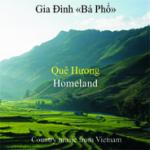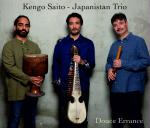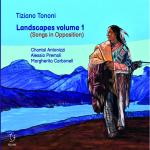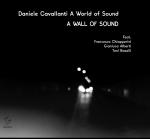

Marking an important new addition to the part of our catalogue focusing on sounds from the Far East is a CD dedicated to the music of Vietnam, a country that though having lived for centuries under the yoke of colonialism, first by China and India then by France and the United States, has managed not only to preserve but to continually enrich its musical heritage, creatively incorporating foreign influences.
On Quê Hu’o’ng (Homeland), graced by the fine playing of Gia Din «Ba Pho», listeners can sample a number of the various spirits of Vietnamese music, generally divided into three specific categories: music produced by the country’s numerous ethnic groups (played on traditional instruments); the country’s official ‘folk’ music, deriving from the majority ethnic group, the Kinh; ritual and sacred music evoking the spirits of female divinities through folk song and epic poetry. On this CD exquisite vocal melodies alternate with refined instrumental tracks, offering a clear if synthetic overview of the artistry of Vietnamese music. Here we have love songs, hymns to natural beauty or to folk heroes together with more recent compositions by Trinh Cong Son (regarded by many as the Vitenamese Bob Dylan) and Ba Pho himself (leader of the ‘family run’ quartet who play on the CD), folk tunes from North and South celebrating spring festivals and marital fidelity that together form a wide repertoire of themes and sound structures guaranteed to delight and surprise listeners. Included in the liner notes are descriptions and explanations of each of the instruments employed by the Gia Din “Ba Pho” ensemble: from the over 3000 yr-old Dan Da, a kind of stone xylophone of which there are fewer than twenty surviving examples to the Dan Rung (bamboo xylophone); from the Giay (a 36-string zither) to the Bau (a one string instrument requiring a special playing technique) to theTrong ( multi-drum membraphone) to the Dan Moi (a type of metal idiophone); from the Loong No (bamboo aerophone) to the Huan (vertical flute). The most striking thing about Quê Hu’o’ng (Homeland) is the variety of situations it depicts, opening our ears to the fascinating world of rural Vietnamese music.

























